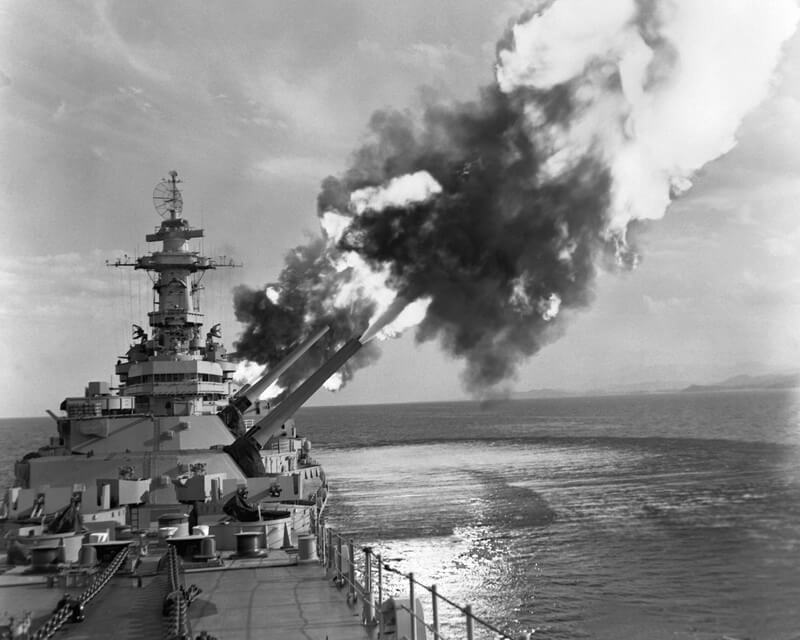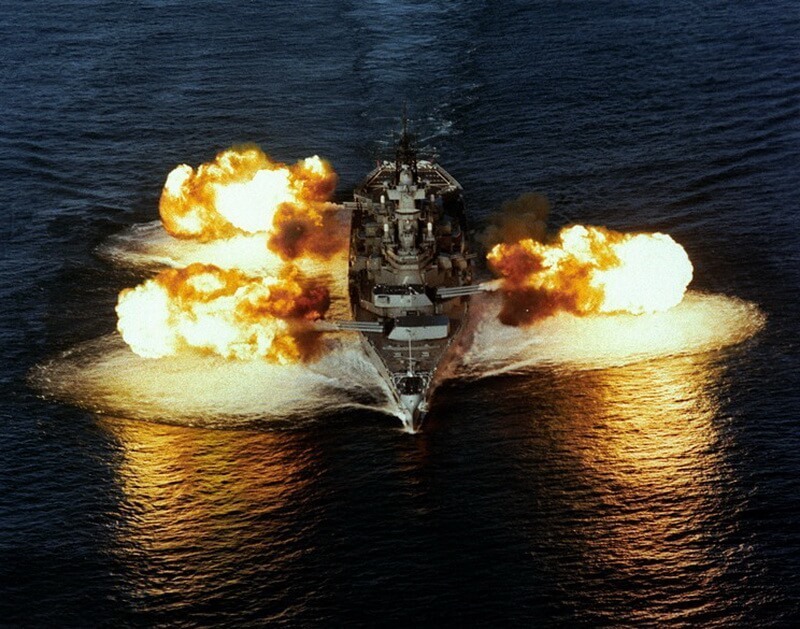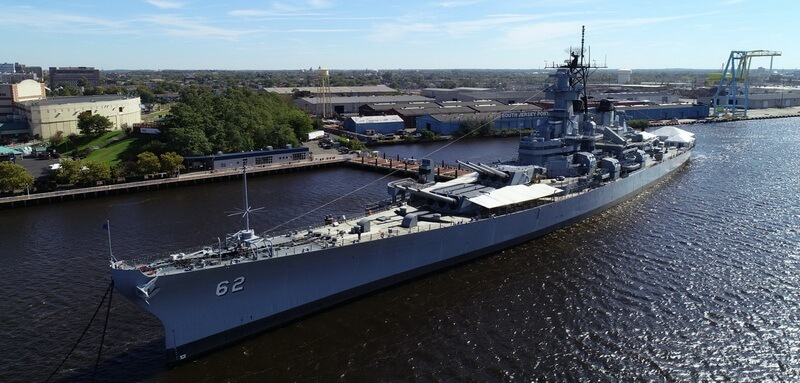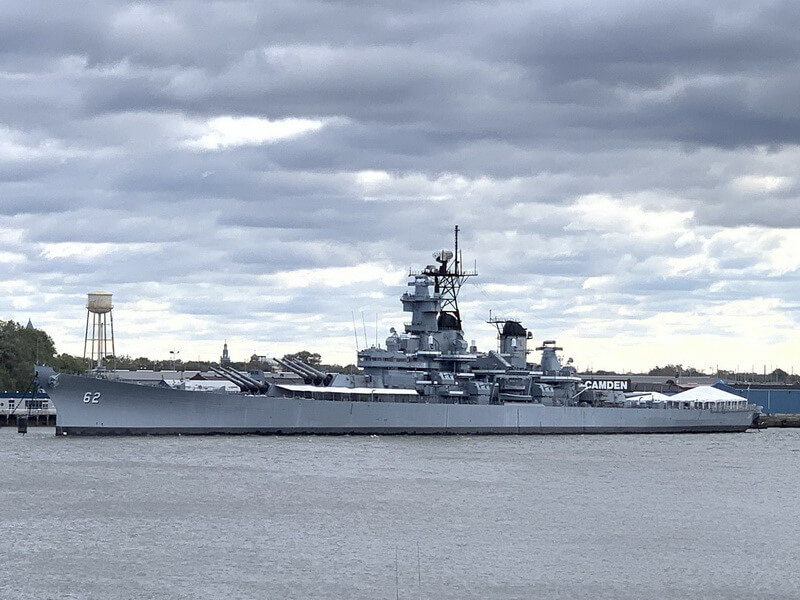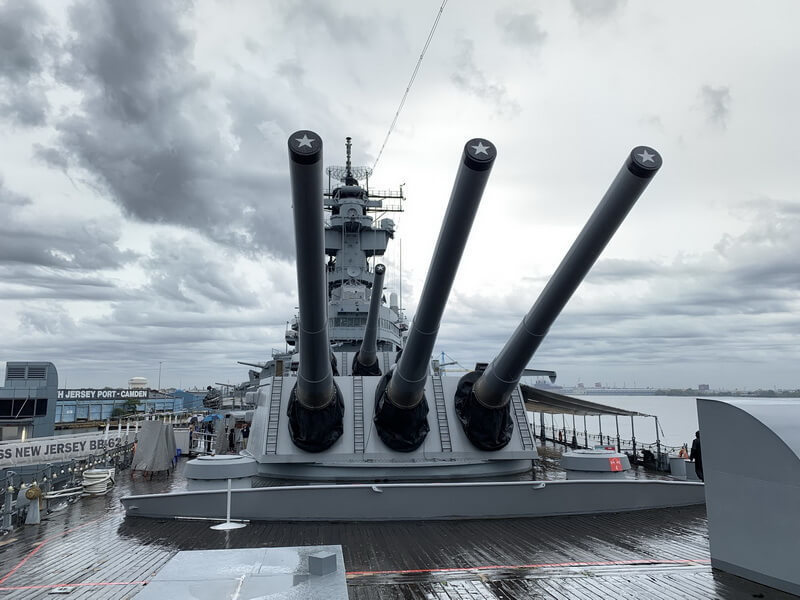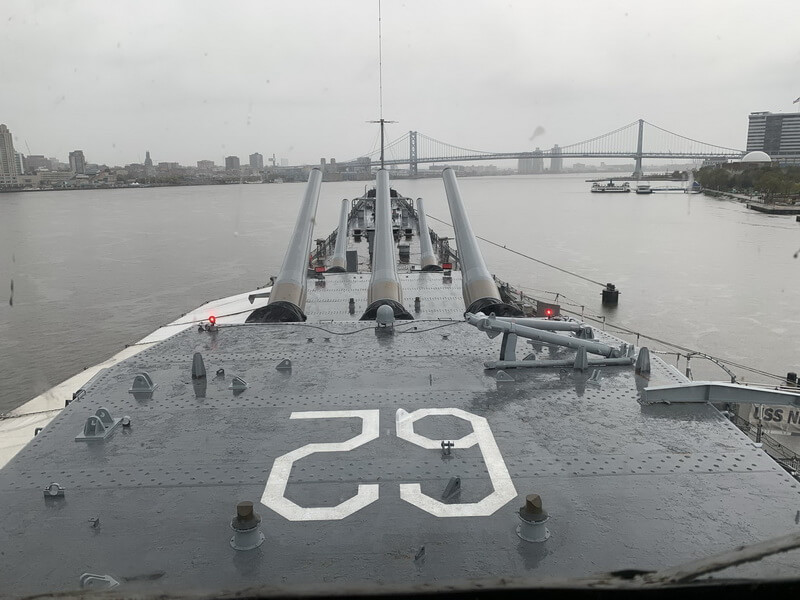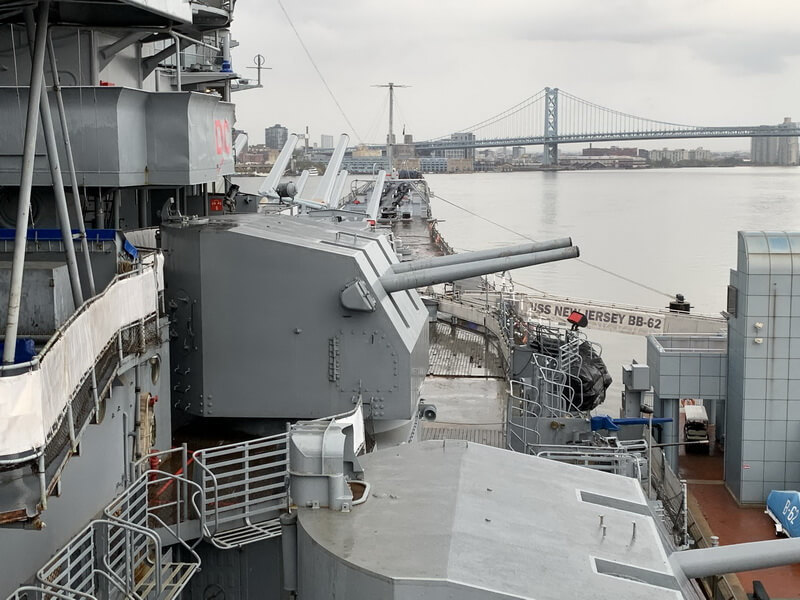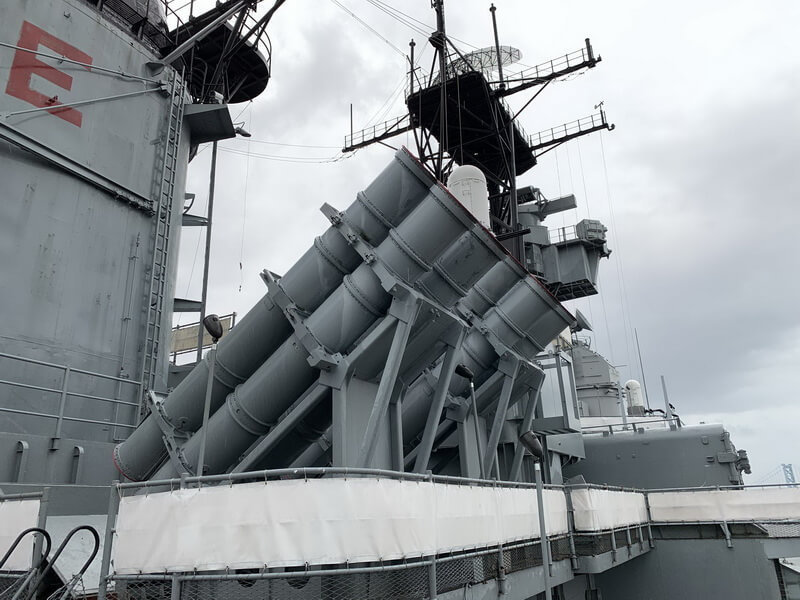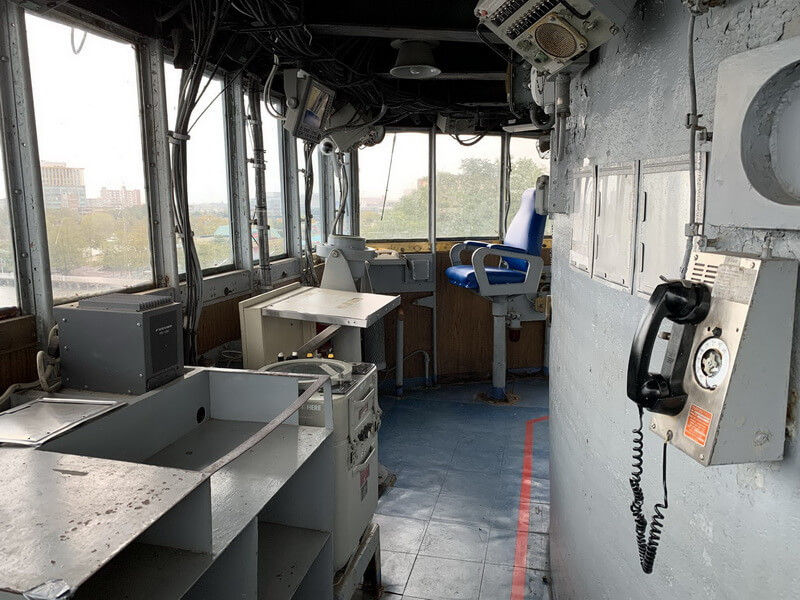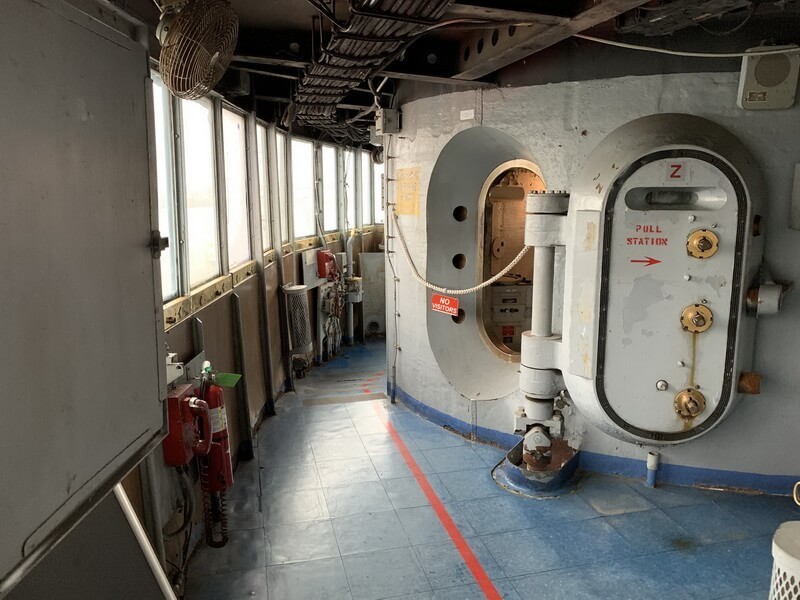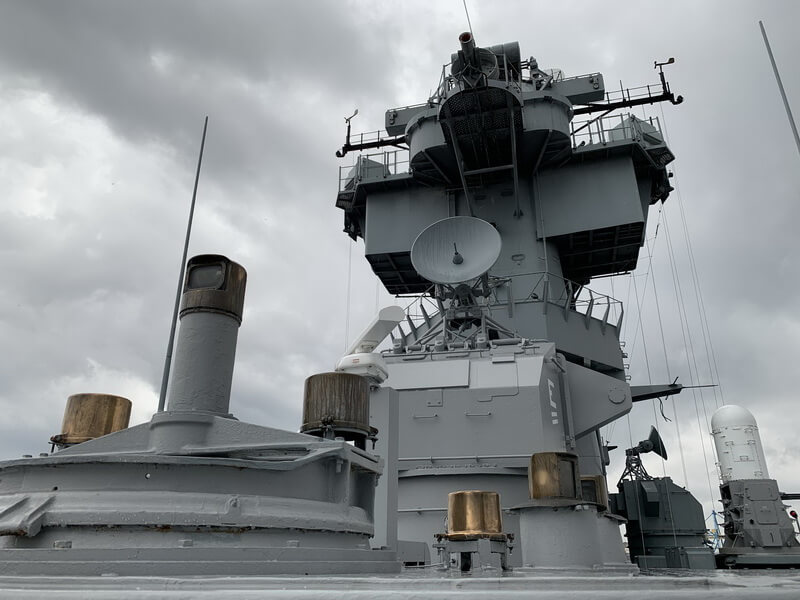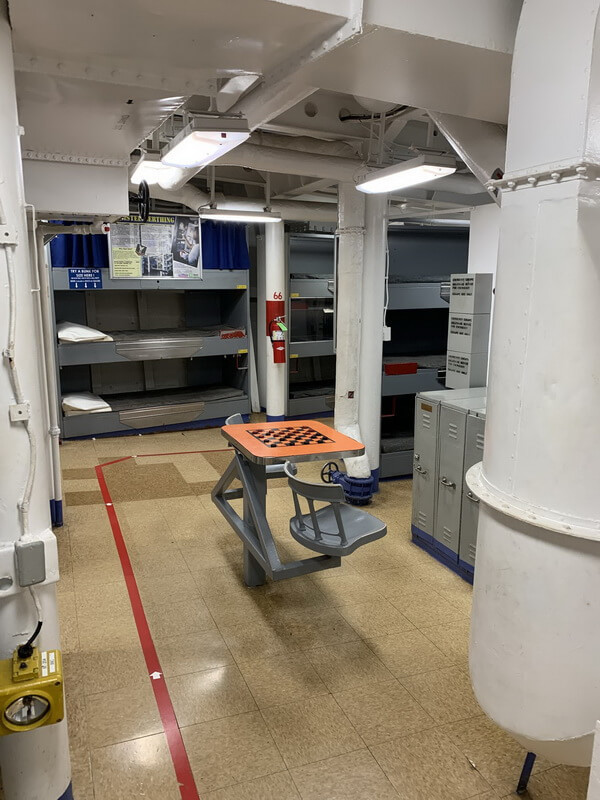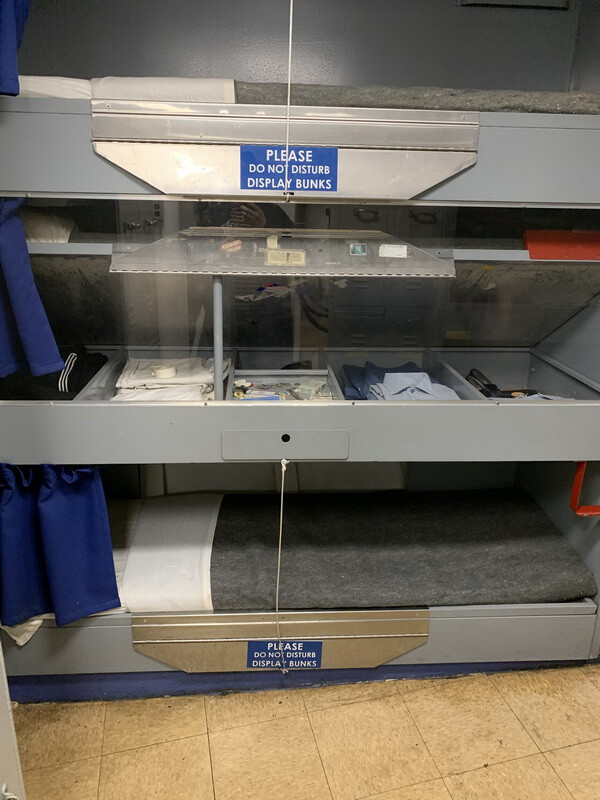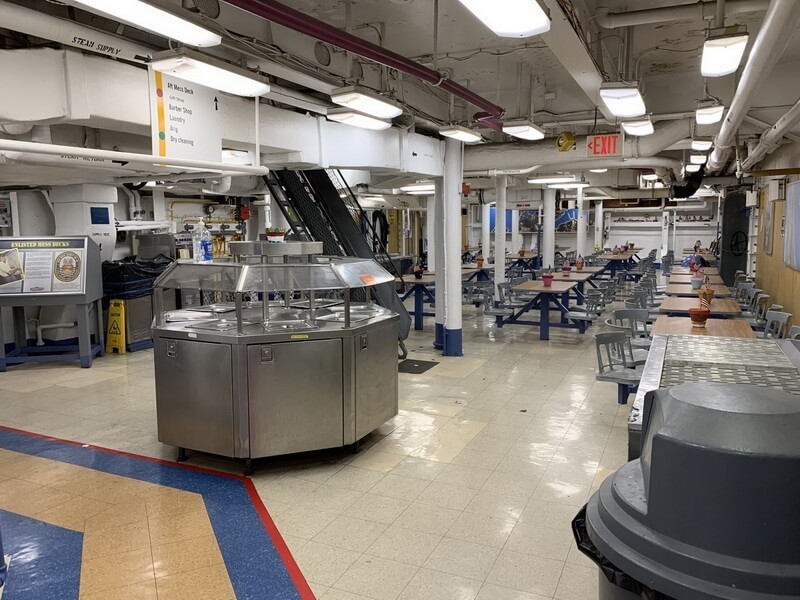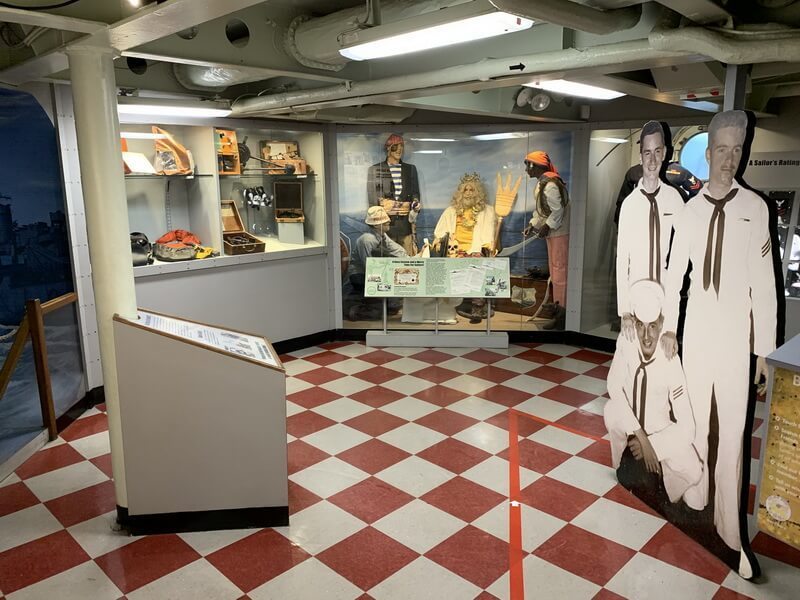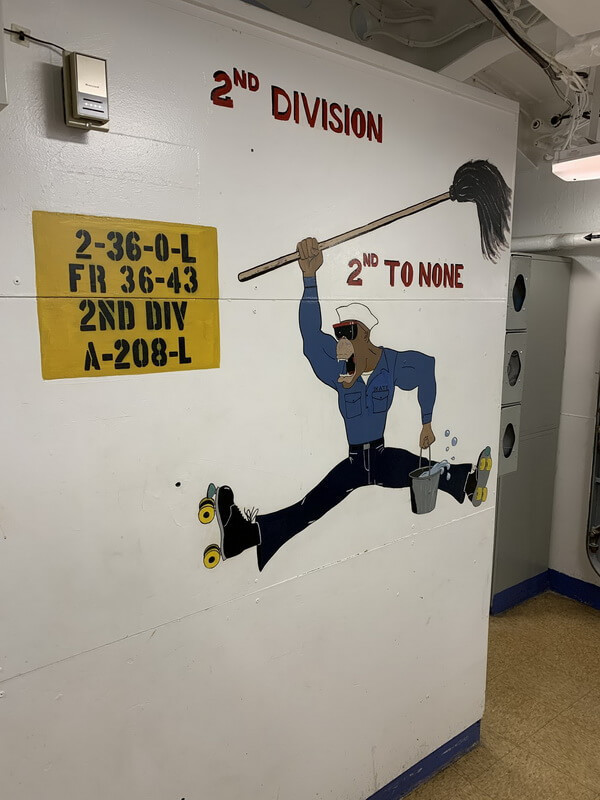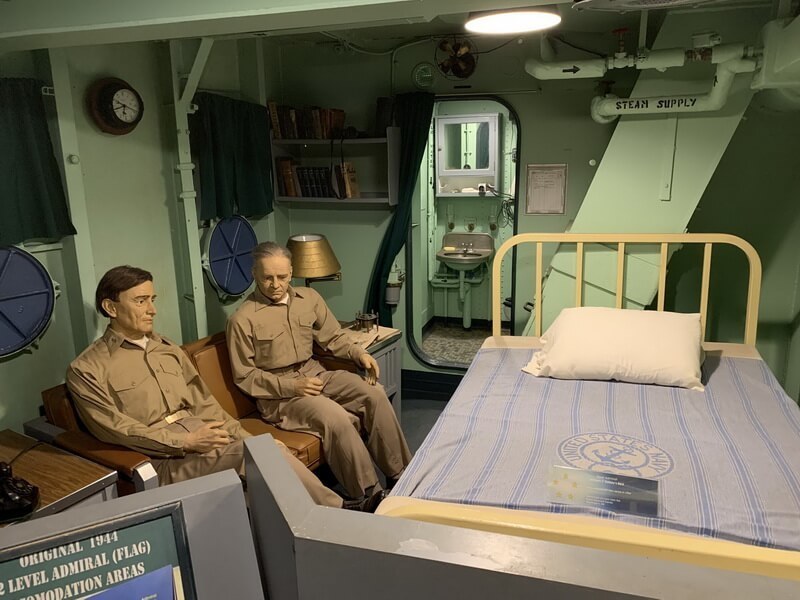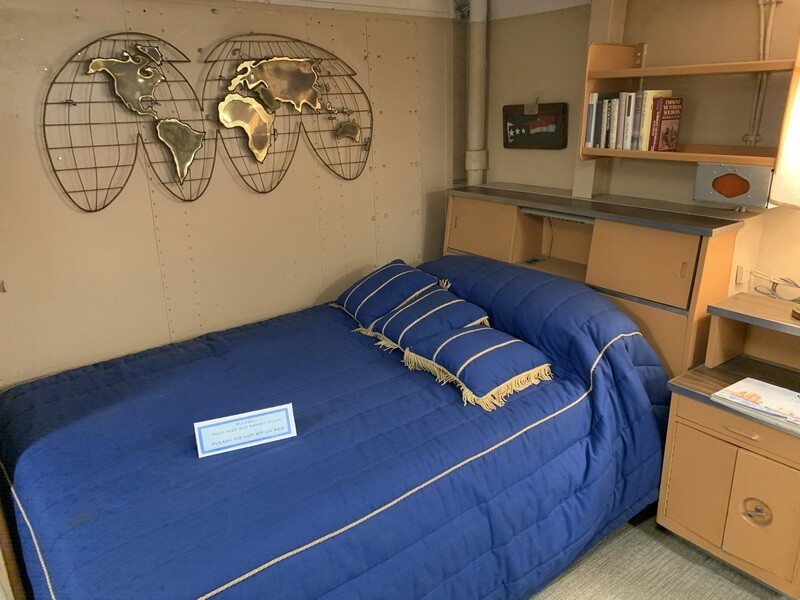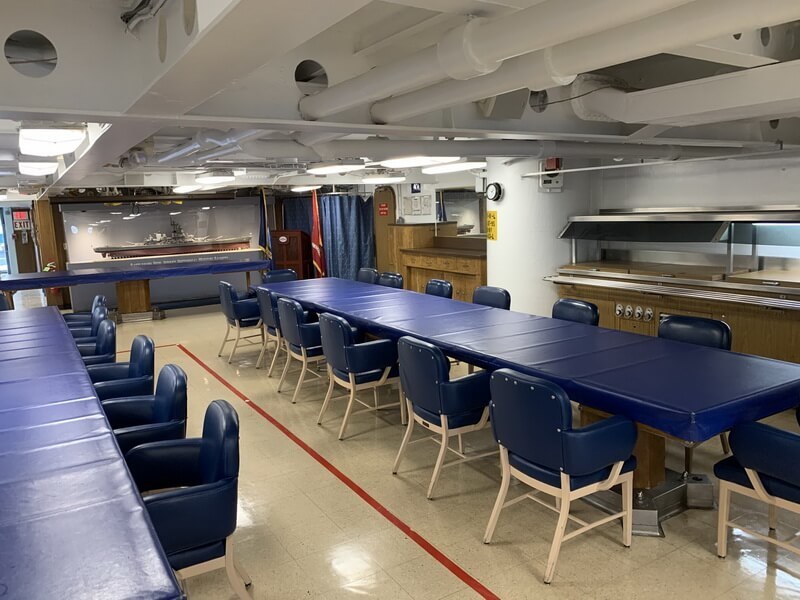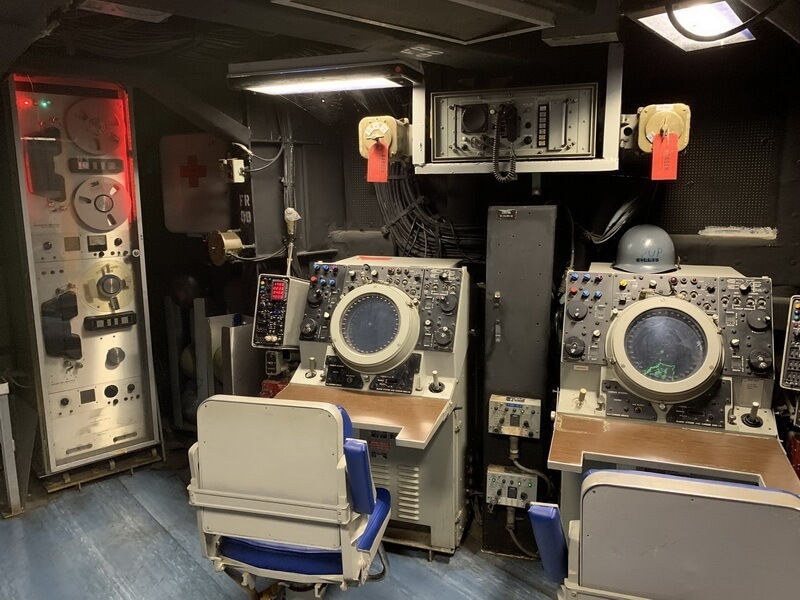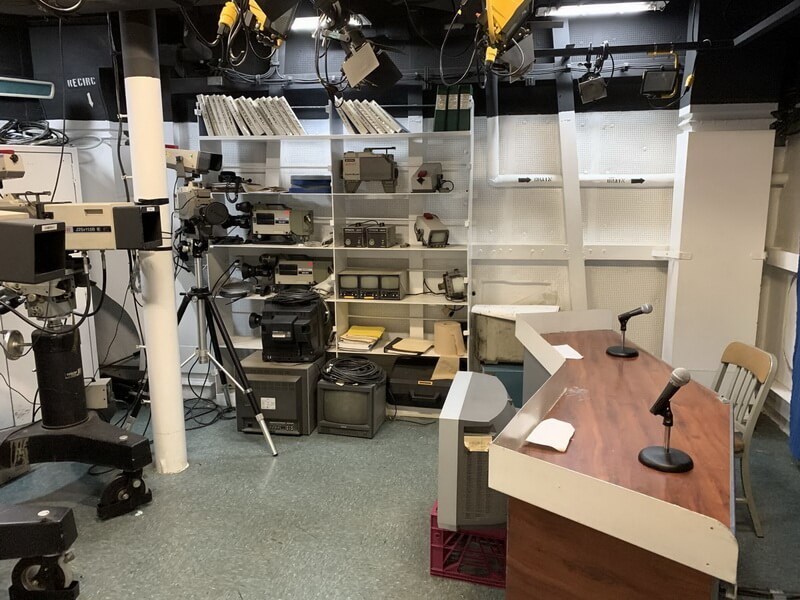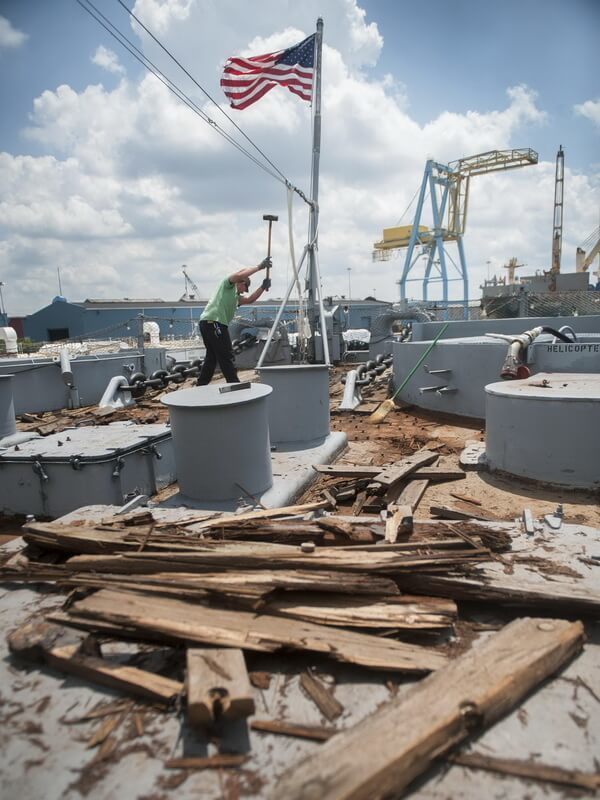Battleships are outdated – that’s a fact. However, the fact also remains, that there are no weapons in the world, that look more impressive than they are. One of the largest battleships, that have survived to this day, is the US battleship New Jersey, nicknamed the “Big J” and the “Black Dragon”. But the official motto of the ship is “Fire Power for Freedom”.
The battleship New Jersey is one of the most decorated US battleships. Entering service in 1943, she fought the Japanese in the Pacific for two years. Marianas, the Philippines, Okinawa — everywhere there was work for nine 16-inch (406-mm) guns of the battleship.
In 1948, New Jersey was sent to the reserve, but she did not stay there for a long time. In 1950 the Korean War began, where US quickly learned, that air supremacy did not guarantee victory. As a result, battleships and cruisers again found a lot of work to destroy coastal targets. New Jersey was reactivated in 1951, and for the next two years she operated off the coast of the Korean Peninsula. After the end of the war, the battleship served in European waters until 1957, when she was again sent to the reserve.
After ten years in reserve for battleship was reactivated again, as the Vietnam War was gaining momentum. The leadership of the US Armed Forces decided that the “Fire Power for Freedom” will produce not only material, but also a moral effect on the enemy. Of the four Iowa-class battleships, the newest in the US Navy, it was New Jersey that was chosen, since it underwent more thorough modernization before being sent into reserve. At that time, the ship was the only operating battleship in the world. New Jersey served off the coast of Vietnam for a year (1968-1969), after which she returned to the reserve.
Iowa class battleships returned to service in the 1980s. According to the plans of the new president, Ronald Reagan, they were to become part of the 600-ship US Navy, revived after years of previous neglect. This time, all four Iowa-class battleships underwent a major modernization, which, among other things, included the installation of four launchers for the “Harpoon” anti-ship missiles and eight launchers for the “Tomahawk” cruise missiles instead of several of the 5-inch anti-aircraft guns. According to some sources, “Tomahawks” carried nuclear warheads, which gave those battleships enormous firepower.
In 1982, after the completion of the modernization, New Jersey was reactivated by the US Navy in the presence of Ronald Reagan himself. However, instead of the expected epic confrontation with the Soviet Navy, the battleship had to deal with completely different threats. In 1983-1984 she served off the coast of Lebanon, where New Jersey supported the international peacekeeping forces, trying to stop the civil war in the country. It was only in 1986 that the battleship finally took its place at the heart of the operational formation of the US fleet in the Pacific Ocean, as originally intended. In September of the same year, New Jersey set off for the cruise in the Sea of Okhotsk, close to the Soviet shores.
With the tensions between the United States and the USSR seriously reduced in 1991, New Jersey was again sent to the reserve, where it remained for nine years, until it was removed from the US Navy ranks and transferred to the state of New Jersey to be turned into a museum ship.
Of several options for the ship-museum location, the choice fell on the city of Camden. This is most likely due to three factors. Camden is located across the Delaware River from Philadelphia, where New Jersey was built. Camden itself was also famous for its New York Shipbuilding shipyard, where many famous ships were built. Among the largest are the aircraft carriers Kitty Hawk (CV-63) and Saratoga (CV-3), the battleships Idaho (BB-42) and South Dakota (BB-57), the heavy cruiser Indianapolis (CA-35) and cargo vessel Savannah — the world’s first civilian ship with a nuclear power plant. Unfortunately, the shipyard closed in the 1960s, depriving the city of its last major enterprise. Without industry, Camden quickly decayed and became impoverished, and in 1999 was even declared bankrupt. However, the local authorities did not give up and took a variety of measures to return the money to the city. Most likely, it was the desire to help Camden, that became the third and final factor, influencing the movement of the New Jersey there. So battleship New Jersey went to Camden, where she was opened as a museum ship in 2001.
Modern crew of the New Jersey is proud of the fact, that of all battleships, turned into museums, their ship has the largest number of compartments available to the visitors. Unfortunately, you cannot get to see all of them by themselves: dangerous places, like the 16-inch turret No. 2 or the engine and boiler rooms, are accessible only on Saturday and Sunday for organized tours after preliminary booking.
But even without this, a visitor to New Jersey can see a lot of interesting places: from the admiral’s cabin and and sailors’ quarters to the wardroom and the television studio (when the ship was reactivated in the 1980s, cable TV was installed aboard), from the post office to the dentist’s office. Everything is neatly preserved in the state, in which it was during the service in the 1980s and 1990s. The only exception is the cabin of Admiral William Halsey, who flew his flag on this ship as commander of the 3rd Fleet in 1944-1945 — it was carefully restored from the period drawings and photographs. By the way, the Spartan (in comparison with other cabins of the ship) interior of the Halsey’s cabin shows well, how much the requirements for comfort on US warships have advanced over the 40 years of the 20th century.
You should look for a description of the compartments inside, can use an audio guide. For an extra fee, group tours are available for all tastes: from general education to “adults only” tour, which will tell you about those aspects of the life of the battleship crew, that children do not need to know about. In addition to the usual tours during working hours, you can spend the night on the battleship: the ship organizes overnight stays for various scout organizations. Alas, adults can only get there when accompanied by children. But in November, an event, inaccessible to children, takes place aboard the battleship — a beer festival. Drinking a beer in the shade of the 16-inch guns is certainly a very atmospheric event.
The museum ship — like almost any other museum — is always short in money, so its management is looking for a variety of ways to earn them. In addition to the usual T-shirts, mugs and the like, you can buy some non-standard souvenirs like the national flags, that were hoisted over the battleship, or pieces of old teak cover from the upper deck of the ship.
The history of replacing the wooden deck cover deserves to be told. Traditionally, the deck and bridges of the battleship are made of teak wood, which has excellent characteristics, but also costs a lot, especially since the planks must be of excellent quality and the same length and thickness for all 5000 m² of the upper deck. When the management of the museum ship saw the bill for replacing the upper deck cover (it was over $5 million), the project was almost abandoned. Only a small part of the deck cover on the bridges was replaced. But then an idea came to someone’s bright mind to buy planks of lesser thickness and install them on a lining of synthetic materials. This reduced costs to “only” $1.5-2 million, which were obtained in the form of loans, grants and donations. One cannot help, but admire a country, in which a museum ship can collect such sums, even if this country belongs to one of the richest in the world.
With the beginning of the work it became clear, that the replacement would not be so simple. It was necessary to remove not only the old planks, but also the nails that held them. In addition, due to water seeping through the damaged planks, the steel upper deck of the battleship was covered with rust, which had to be removed. And only then could the lining be laid under the new teak planks. As a result, the replacement of deck cover, which began in 2015, was still not completed in 2020.
After such sums, one is no longer surprised at the cost of the usual upkeep and maintenance of a battleship — $10,000 a day.
This story has two morals. First, every time you hear outrage about this or that distinguished ship was scrapped and not turned into a museum ship, remember the numbers above. They are quite impressive even by US standards, yet alone by the standards of poorer countries. Serious repairs to a ship of this size will cost tens of millions of US dollars, and this should be done regularly. Secondly, before scolding some not very well-kept museum ships, remember that their maintenance and repair costs a lot of money, which are collected bit by bit. Most of the work aboard museum ship is done by volunteers, who work there without pay.
Museum address: 100 Clinton St, Camden, NJ 08103. Now museum is closed due to COVID. But when it was open, it was from 9:30 am to 3:00 pm (September-April) or until 5:00 pm (May-August) every day except Thanksgiving, Christmas and New Year. The regular admission fee is $25. Tickets for the tours to visit the 16-inch turret No.2 and Power Plant compartments cost $30, while a ticket for the first tour allows you to buy a regular ticket at half price.
Museum website: https://www.battleshipnewjersey.org/
